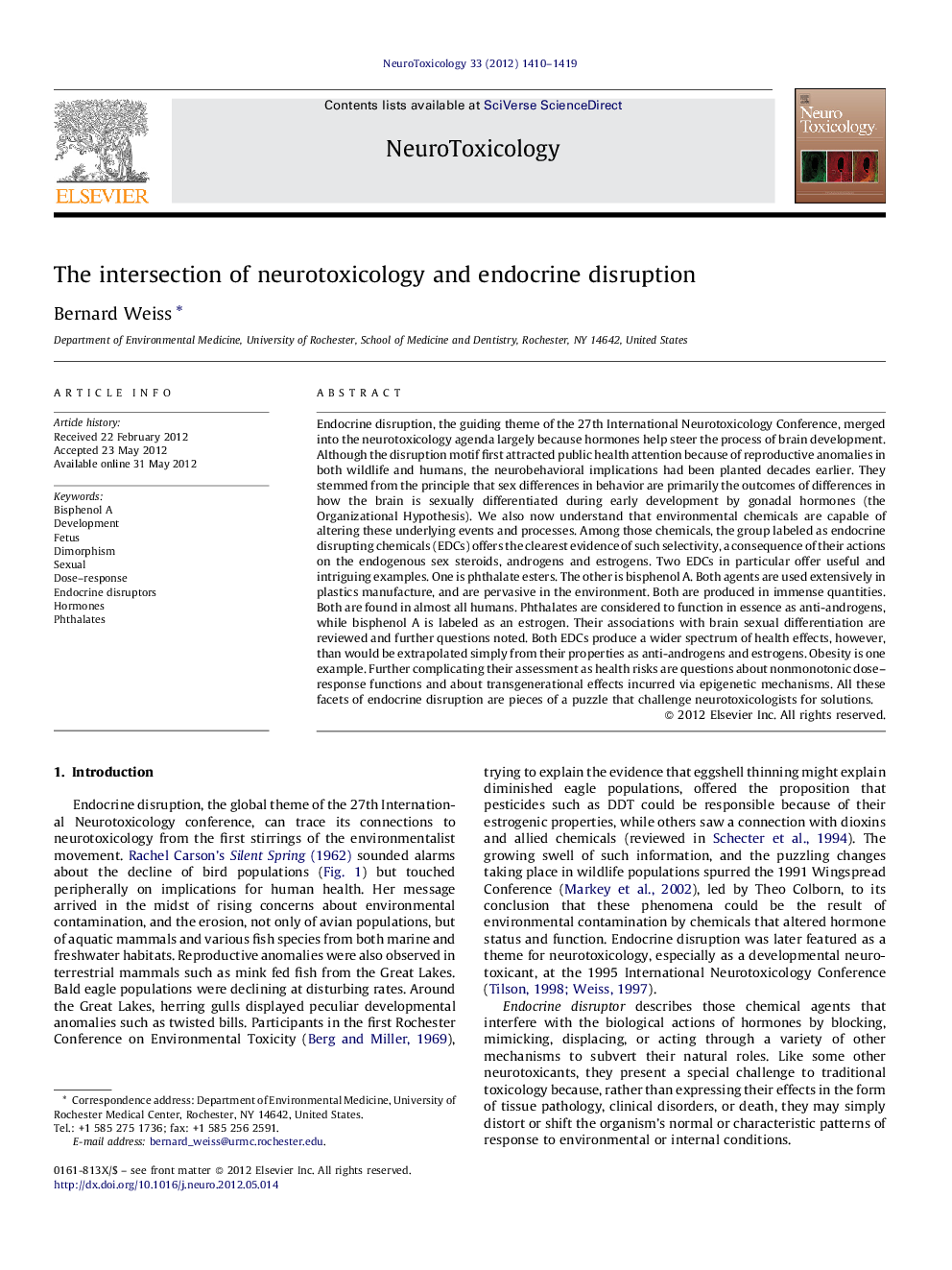| Article ID | Journal | Published Year | Pages | File Type |
|---|---|---|---|---|
| 2589902 | NeuroToxicology | 2012 | 10 Pages |
Endocrine disruption, the guiding theme of the 27th International Neurotoxicology Conference, merged into the neurotoxicology agenda largely because hormones help steer the process of brain development. Although the disruption motif first attracted public health attention because of reproductive anomalies in both wildlife and humans, the neurobehavioral implications had been planted decades earlier. They stemmed from the principle that sex differences in behavior are primarily the outcomes of differences in how the brain is sexually differentiated during early development by gonadal hormones (the Organizational Hypothesis). We also now understand that environmental chemicals are capable of altering these underlying events and processes. Among those chemicals, the group labeled as endocrine disrupting chemicals (EDCs) offers the clearest evidence of such selectivity, a consequence of their actions on the endogenous sex steroids, androgens and estrogens. Two EDCs in particular offer useful and intriguing examples. One is phthalate esters. The other is bisphenol A. Both agents are used extensively in plastics manufacture, and are pervasive in the environment. Both are produced in immense quantities. Both are found in almost all humans. Phthalates are considered to function in essence as anti-androgens, while bisphenol A is labeled as an estrogen. Their associations with brain sexual differentiation are reviewed and further questions noted. Both EDCs produce a wider spectrum of health effects, however, than would be extrapolated simply from their properties as anti-androgens and estrogens. Obesity is one example. Further complicating their assessment as health risks are questions about nonmonotonic dose–response functions and about transgenerational effects incurred via epigenetic mechanisms. All these facets of endocrine disruption are pieces of a puzzle that challenge neurotoxicologists for solutions.
